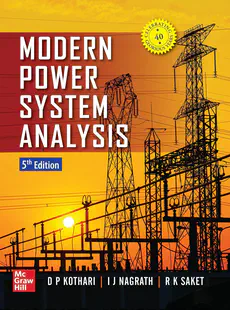Course Info
Course materials are available at FESB MERLIN.
Course Objectives
Training students for:
- Understanding the specifics related to the network structure, grid planning and operation as well as network element construction
- Development of equivalent models under system of symmetrical components
- Generation of network models which are reduced on specific voltage level or per unit system
- Understanding and application of basic calculation methods for electrical network analysis
- The formation of the network element replacement models using the two-port theory
- Determination of electrical parameters and calculation of voltage and current distribution across power lines
- The application of matrix algebra in power system analysis
- Understanding the concept and usage of symmetrical component analysis
- Deepening the basic knowledge in the field of electricity transmission and distribution
Course content
- The structure and main characteristics of the power system, the type of electrical power networks and their role in the system. Power lines (overhead lines and cables) performance, type and main components
- Equivalent schemes and calculation of its electrical parameters for different elements in electric power networks
- Calculation of currents and voltages in a symmetrical power networks: voltage level reduction method.
- Calculation of currents and voltages in a symmetrical power networks: per unit system reduction method.
- Analytical techniques in power system analysis: Linear networks, Superposition theorem, Compensation theorem, Reciprocity theorem, Thevenin’s/Norton’s/ Millman’s theorem
- Two port networks: calculation of constants, connection schemes
- Different transmission line models, telegraphic equations, current and voltage relations on a long transmission lines
- Ideal transmission line, real transmission line, reflections, Ferranti effect
- Transmission line parameters: resistance and inductance; transposition and equivalenting.
- Transmission line parameters: capacitance and resistive leakage
- Power system calculations using matrix algebra: Network topology, graphs, incidence matrix, methods for calculating bus impedance matrix
- Methods for calculating bus admittance matrix. Examples of power system calculations using matrix algebra.
- Symmetrical components: Transformation matrix, physical meaning, element models in symmetrical components system, different applications of symmetrical component system
List of laboratory or design exercises
- Preparing for the lab. exercises and demonstration of software tools used in exercises
- Current and voltage relations on a long transmission lines – Matlab calculations
- Single phase electrical network– Matlab calculations
- Three phase electrical network – Matlab calculations
- Calculation of bus impedance/admittance matrix – Matlab calculations
- Technical visit to high-voltage substation and surrounding overhead lines (visit to TS 400/220/110 kV Konjsko)
Course Literature
- Goić R., Jakus D., Penović I.: Električne mreže - interna skripta, FESB, 2014.
- Ožegović, M.; Ožegović, K.: Električne energetske mreže I-III, FESB Split, Computing d.o.o. Split
- Goić, R., Jakus, D., Krstulović, J., Mučić, D. – Električne mreže – upute za laboratorijske vježbe -, Split, FESB
- D. P. Kothari, I. J. Nagrath: Modern Power System Analysis, McGraw-Hill Education, 2003.
- J. Grainger , W. Stevenson Jr.: Power System Analysis, McGraw-Hill, 1994
- Stag, G. W.; El-Abiad, A., H.: Computer Methods in Power System Anylysis, McGraw-Hill, New York, 1968
- Venikov, V.,A.: Electrical Network Performance Calculations and Analysis, Mir Publishers, Moscow, 1985
